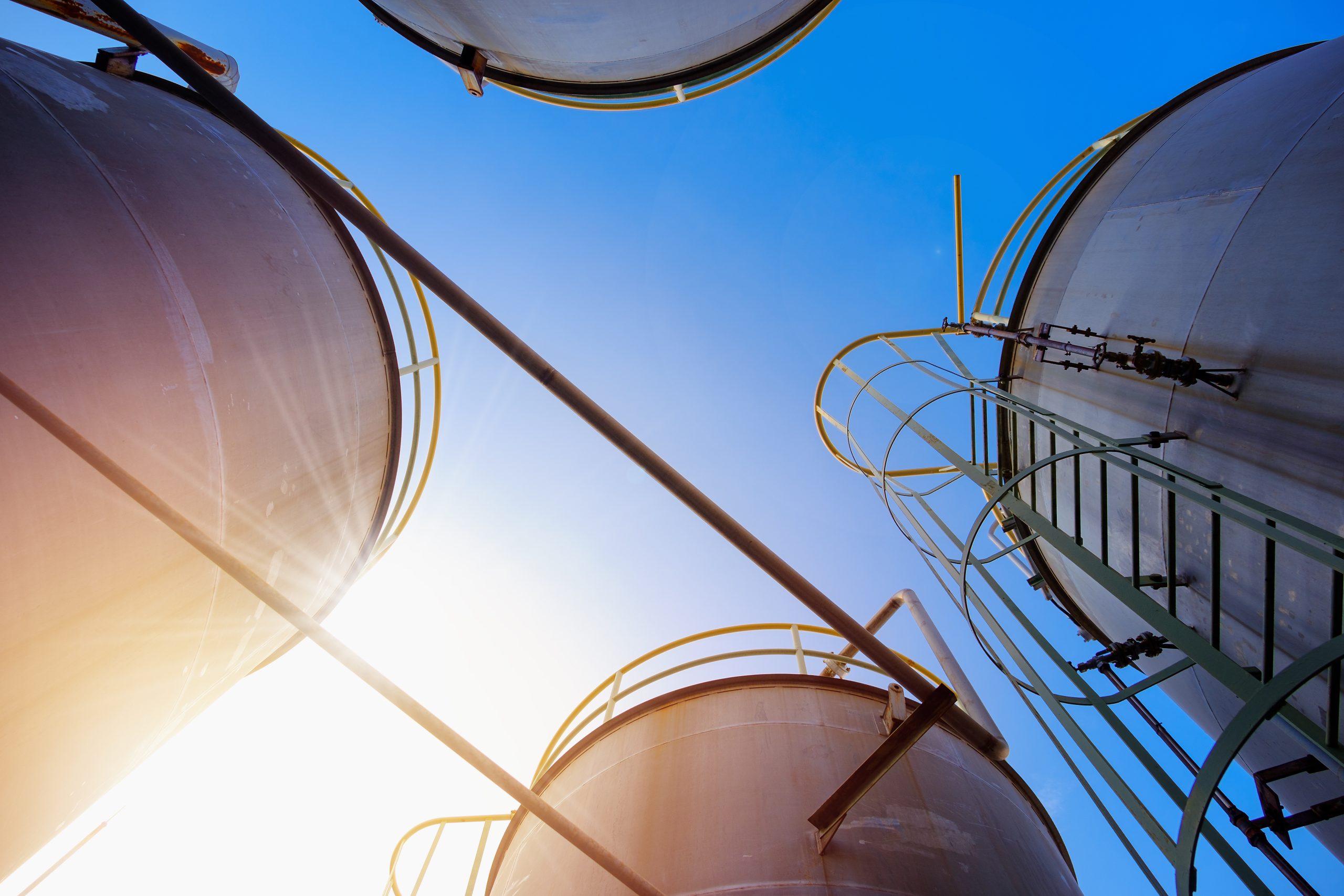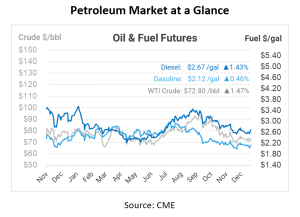
How to Save Money and Avoid Common Fuel Tank Repairs
If you use bulk fuel tanks for your business, you know how convenient and cost-effective they can be. You can save .30−.50 per gallon compared to other fueling methods, and you have the security of having your own fuel supply on-site. But you also know that fuel tank repairs and maintenance are necessary to keep your system in good working order. Fuel tanks are often exposed to harsh weather conditions, heavy traffic, and daily use by drivers. These factors can cause wear and tear on the tank system, leading to problems that can affect your fuel quality, safety, and budget.
In this article, we’ll share the most common fuel tank repairs, based on data from thousands of service calls from commercial fuel buyers received by Mansfield’s Fuel Systems & Services (FS&S) team. We’ll also tell you how much these repairs typically cost, and how you can prevent them or reduce their impact. By following these tips, you can save money, avoid downtime, and extend the life of your fuel tank system.
Don’t have a repair & maintenance program in place today? Contact Mansfield to learn how to implement a program, whether you operate one site or one thousand.
Fuel Dispenser & Pump Repairs
The fuel dispenser and pump are the parts of the fuel tank system that drivers interact with the most. They are also the parts that are most prone to damage and malfunction. From broken pumps to driving off with the nozzle still attached to the truck (yes, that happens more often than you’d think), these repairs account for nearly 1/3 of service requests. Even a slow dispenser could cost you increased labor time and productivity, so repairs can lead to improved operational efficiency.
How much can you expect to pay for a dispenser or pump issue? The average service cost last year was $902, but prices vary widely depending on the severity of the problem. A routine hose and nozzle replacement for a backyard tank may only cost $200-$300, while a more serious issue, like a leak or full pump replacement, could cost thousands.
How can you prevent or reduce dispenser and pump problems? Here are some tips:
- Check the dispenser and pump regularly for signs of wear and tear, such as cracks, leaks, rust, or corrosion.
- Replace the filters every 6-12 months, or more often if you notice reduced flow or dirty fuel.
- Educate your drivers on how to use the dispenser and pump properly, and remind them to remove the nozzle before driving away.
- If you don’t already have them, install breakaway devices on the hoses to prevent damage if the nozzle is accidentally pulled.
Tank Gauge Repairs
The tank gauge is a device that monitors the fuel and water levels in the tank, and alerts you of any contamination, leaks, or technical failures. When there’s a problem, the tank gauge sends an alarm message to notify you.
How much does a tank gauge repair cost? The average cost of a tank gauge repair is $833, but costs can range from as low as $18 (shipping out an inexpensive part for replacement) to over $8,000. Environmental alarms reported by the tank gauge are unsurprisingly the most expensive and intensive service call – a single severe leak can cost tens of thousands. When an environmental alarm does go off, acting quickly is critical to prevent severe environmental risks. Technical failures of the device itself can range from simple reboots to requiring a brand-new device. For that reason, it’s important to find a technician you trust to diagnose and resolve tank gauge issues.
How can you prevent or reduce tank gauge problems? Here are some tips:
- Test the tank gauge annually (or according to manufacturer specifications) to make sure it’s working correctly and accurately.
- If you have red or yellow indicators on your gauge, make sure to call for repairs immediately
- Follow the manufacturer’s instructions for maintenance and troubleshooting.
- Contact a qualified technician as soon as you receive an alarm message or notice any abnormal readings.
Fuel System Repairs
Fuel tanks have many parts and components that must be maintained, such as the storage tank itself, vents, pipes, containment systems, and more. In third place among the most common fuel tank repairs is the category “Fuel System Repairs”, which includes anything from ground cover maintenance to underground sump replacements to vent repairs. Water intrusion is a common challenge for fuel systems, since it can corrode the system and fuel quality year-round. Fuel quality, in turn, can result in costly impacts on your fleet and equipment if not repaired quickly. According to the EPA, 83% of USTs in one study had moderate-to-sever corrosion, yet very few tank operators were aware of the issue.
Given the variety in tank system breakdowns, this category is home to the most expensive service costs. The average tank system repair in 2023 was $967, with the most expensive repairs reaching up to an eye-watering $12,000. If the project involved breaking concrete and digging up underground equipment, you could see even higher prices.
How can you prevent or reduce tank system problems? Here are some tips:
- Inspect the tank system regularly for signs of wear, such as damage or corrosion.
- Keep the tank system clean and free of debris, dirt, water, and microbial contamination.
- Ensure the fuel system is working properly, including all piping and containment systems.
- Consider a professional tank cleaning service on a periodic basis to remove any sludge or sediment buildup, especially in light of changes in fuel spec degradation.
Tank Inspections
One of the best ways to prevent costly and dangerous fuel tank problems is to have your tank inspected periodically by a certified technician. Tank inspections can help you detect and fix any issues before they become worse, and ensure your tank complies with local, state, and federal regulations. Many businesses make it a policy to inspect their tanks every 3, 5, or 10 years, depending on the type and age of the tank. For underground tanks, most states require visual inspections regularly. Here’s an example of a tank inspection checklist from one municipality.
A typical fuel system inspection would be $250-$300, though a more in-depth analysis of your fuel system averages $838 per inspection as more requirements are added. Of course, those tank inspection costs can be a bargain compared to the risk of a leak or a violation. Specialized testing of specific tank components may cost more, while a general inspection of the tank could cost just a few hundred dollars. A compliance audit to evaluate record-keeping is also available, since periodic inspections by state or municipal officers will require proper documentation. Building tank inspections into your tank care routine can help you save thousands in future costs.
How can you prepare for a tank inspection? Here are some tips:
- Keep a record of your tank’s history, including installation, maintenance, repairs, and testing
- Gather any documents or permits related to your tank, such as registration, warranty, or insurance.
- Clear the area around the tank and make sure it’s accessible for the inspector.
- Follow the inspector’s instructions and recommendations, and ask any questions you may have.
If you work with a partner like Mansfield for your tank repair and maintenance needs, you can download your fuel system documentation directly from FuelNet to comply with tank inspections by regulators.
Card Reader Repairs
Finally, the last among the top 5 service calls is related to card readers, also known as fuel management systems. Not all tanks have card readers, but they are a useful feature for asset tracking and controlling your fleet’s fuel usage and expenses. Card readers allow you to assign cards or PINs to your drivers, and record when, where, and how much fuel they use. However, card readers can also malfunction or break down, due to factors such as weather, vandalism, or human error.
How much does a card reader repair cost? The average cost of a card reader repair is $783, but costs can vary depending on the type and model of the card reader, and the nature of the problem.
How can you prevent or reduce card reader problems? Here are some tips:
- Check the card reader regularly for signs of damage or malfunction, and report any issues immediately.
- Keep the card reader clean and dry, and protect it from direct sunlight, rain, snow, or ice.
- Educate your drivers on how to use the card reader properly and remind them to handle the cards with care.
- Update the card reader software and firmware as needed, and backup your data regularly.
Keep in mind that depending on your particular hardware, you may be limited in who can service the system.
Conclusion
Managing a bulk fuel tank can be a costly activity – but working with a qualified partner can help you minimize the cost and control your expenses in the future. The benefits of utilizing a bulk tank – lower fuel costs, supply security, product controls – often outweigh the costs of installing and maintaining a tank. A well-built tank can go many years, or even decades, with nothing but the most basic upkeep.
Can you track how much your business spent on tank repairs and maintenance across your entire enterprise? Now you can. Having a reliable repair & maintenance service partner will help you reduce tank downtime while keeping your costs competitive.
Mansfield Energy services thousands of commercial, industrial, and government tanks across the US, providing the scale and expertise to ensure your tanks are treated right every time. With a network of local qualified technicians, Mansfield can help you get the help you need quickly, reliably, and at a fair price. And each tank’s history is tracked and reported in FuelNet, so you can track equipment warranties and repair histories in one central repository.
If your business is operating bulk fuel tanks across the US, it’s time to get serious about equipment maintenance and upkeep. Get better data, better service, and better control by choosing Mansfield as your fuel tank repair & maintenance partner.

This article is part of Daily Market News & Insights
Tagged: Dispenser, Fuel Quality, Fuel System, Pump, Repair & Maintenance, Tank Gauge
MARKET CONDITION REPORT - DISCLAIMER
The information contained herein is derived from sources believed to be reliable; however, this information is not guaranteed as to its accuracy or completeness. Furthermore, no responsibility is assumed for use of this material and no express or implied warranties or guarantees are made. This material and any view or comment expressed herein are provided for informational purposes only and should not be construed in any way as an inducement or recommendation to buy or sell products, commodity futures or options contracts.





